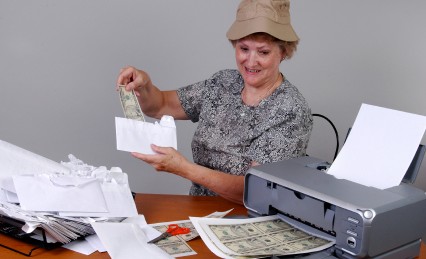Suspect Counterfeit Detection – Human versus Machine
09 September, 2012
As we all know, counterfeit detection is not only an art and a science, it is also a game with changing rules and moving boundaries.  I recently (again, for what seems like the 1,000th time) became involved in a lengthy discussion about the apparent infallibility of machines to accurately and consistently detect counterfeit notes.  The first problem with the detection or identification of counterfeit is terminology.  Ask anyone from your country’s national police force or your Central Bank and they will tell you that the only agency authorised to identify a true counterfeit is the national police agency and/or the Central Bank.  In Canada, the USA and many other countries it is only the national police force (Royal Canadian Mounted Police in Canada and The Secret Service in the USA) that are authorized to make a certified identification of a counterfeit note.  All the rest of us are trained to identify suspect notes. Hence the real debate we confront daily – and one that certain vendors of low-cost machines love to misinterpret – is the difference between suspect and counterfeit.
I will always marvel at the sales person who can look a customer in the eye and tell them that a simple table-top counter or discriminator, costing anywhere from $200 to $8,000 or more, is capable if identifying counterfeit. Â At best, this is a misrepresentation – at worst an outright untruth. Â While many such devices show the word counterfeit on their screens and in configuration settings, what they are actually doing is detecting suspect notes. Â I find it curious that the vendors of these relatively low-cost solutions are allowed to persist in this misrepresentation whilst manufacturers of far more sophisticated equipment, ranging from $100,000’s to $1,000,000’s properly refer to any note rejected by their machine as suspect. Â Why is that? Â In my humble opinion it is because the manufacturers of these sophisticated machines have far more to lose in the credibility department than do their lower-cost cousins, when a properly informed customer challenges them.
In any Central Bank, Commercial Bank, CIT vault or Casino count room that I have visited, it is standard practice to train currency processing staff to be able to identify suspect notes by visual and tactile inspection.  Only after a human has identified a suspect can the proper paperwork be completed, which must accompany the notes when they are delivered to the agency that is authorised to make the final determination of counterfeit.  That said, I completely understand why many managers of currency processing services want to believe that their low-cost machines identify counterfeit – they don’t need to add the expense to train staff properly and they benefit from increased productivity since their staff no longer need to take the time to make manual inspections.
A friend of mine is in the retail computer gaming industry. Â From time to time she will receive notice from her Bank that they identified a counterfeit note in her deposit. Â When she challenges them to prove that it is counterfeit they become evasive. When she further challenges them to show her the note in question, or produce the RCMP written determination that the note was really counterfeit together with an audit document of the process used to first identify the suspect, she always receives a credit to her account!
The question I pose to you, Dear Reader, is this: is it worth the potential loss of credibility, profit and overall reputation when you risk trusting a machine to make the final determination for you?










